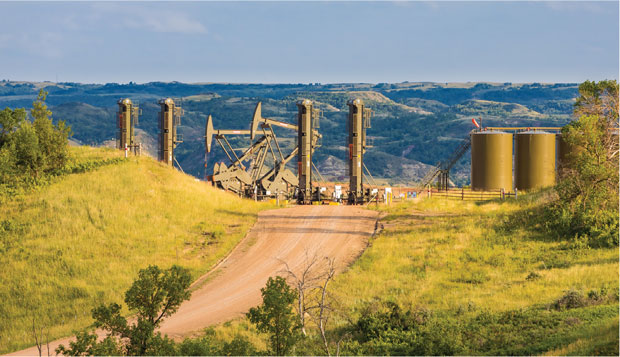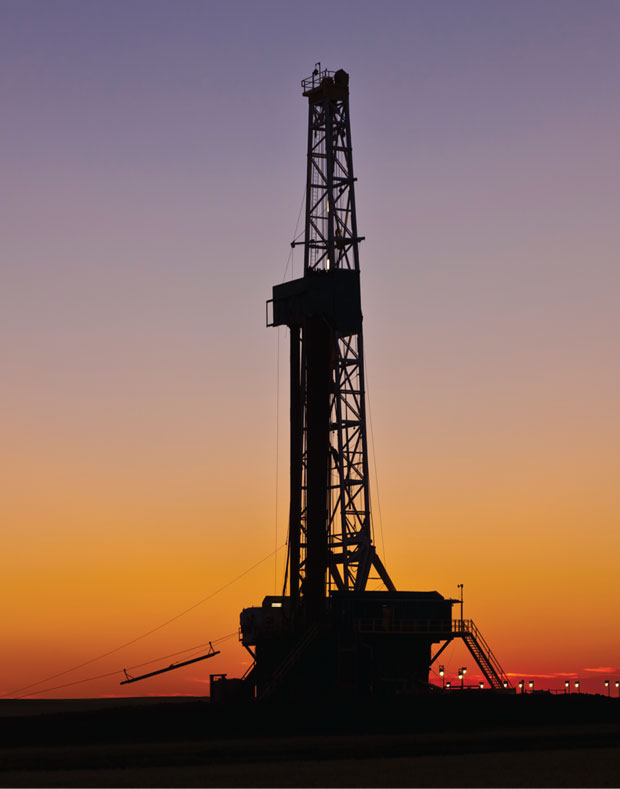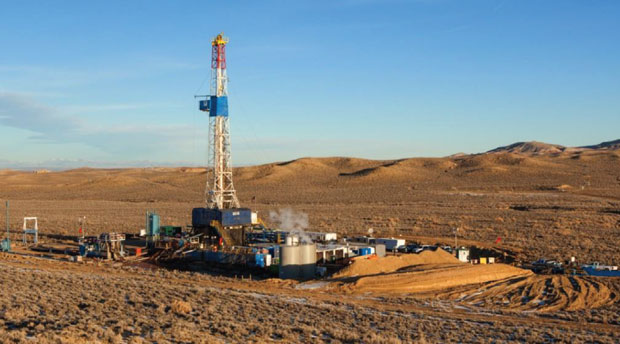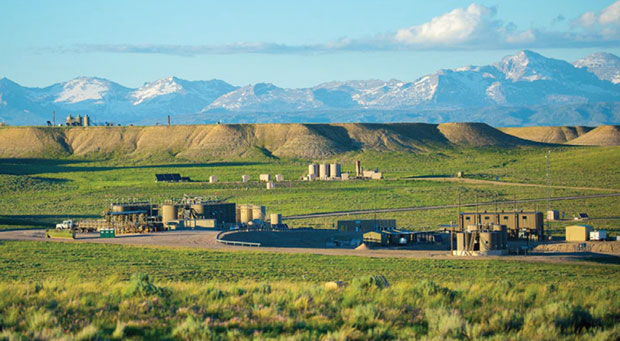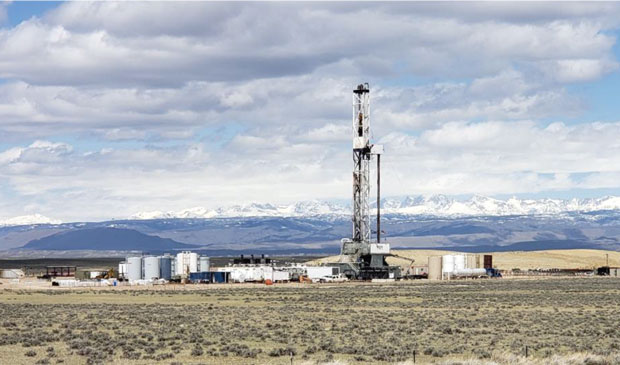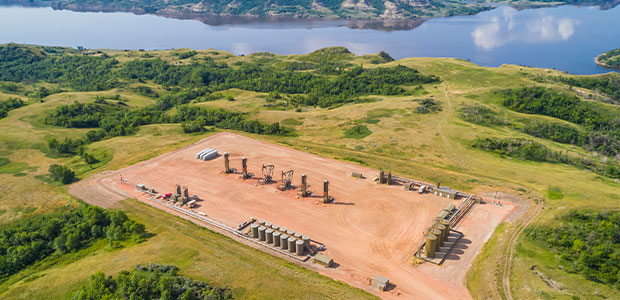
Tight Oil, Natural Gas Plays Present Rockies Operators With Multitude of Options
By Al Pickett, Special Correspondent
With commodity prices touching the highest levels in years, independent operators are ramping activity all across the Rocky Mountain region this summer, and production of both crude oil and natural gas are rising in sync.
In the Bakken Shale in North Dakota’s Williston Basin, Rystad Energy estimates that capital spending is up 40% year over year. Operators also are stepping up investments in the Niobrara tight oil play in the Denver-Julesburg Basin in Colorado and Wyoming, and the tight natural gas formations of the Green River Basin in Wyoming, Colorado and Utah.
Meanwhile, in Wyoming and Montana’s Powder River Basin, a growing number of independents are expanding initial development programs focused on multiple stacked tight sandstone and shale intervals, including the Niobrara, Parkman, Turner, Mowry Shale and Belle Fourche Shale/Frontier.
It is not only the synergistic combination of strong commodity prices and wide-open running room that excite operators. Technological improvements and increased pipeline takeaway capacities are putting an extra glimmer on the already golden investment opportunities in operators’ Rockies portfolios.
For example, Wade Hutchings, senior vice president and chief operating officer for Enerplus, claims the Bakken isn’t fully appreciated by many observers.
Enerplus is deploying technologies ranging from drilling automation software to digital frac valves to improve drilling, completion and production measurables on Bakken/Three Forks multiwell pads in North Dakota.
“There are three reasons for the attractiveness of the Bakken,” he emphasizes. “One, there is still substantial remaining inventory. An independent third-party study says there are more than 10,000 locations left, and half of those are break-even below $50 West Texas Intermediate prices. Two, North Dakota remains a very supportive regulatory environment. And three, we see encouraging oil differentials.”
According to Hutchins, there was a time when Bakken oil was discounted to WTI by $8-$9/bbl. When the Dakota Access Pipeline came on line in 2017, the discount was still around $4/bbl.
“Now, we are seeing significant improvement below $2/bbl,” he states. “In fact, the past few months, we have seen a premium to WTI. In today’s market, there is still a lot of profitability so a few dollars of improvement on differentials isn’t as visible. But when oil returns to $60-$70/bbl, that differential will be important.”
Before the Dakota Access Pipeline came on line, a large percentage of Bakken oil was shipped by rail. Hutchings says the new pipeline helped alleviate that pressure. The Bakken was producing 1.6 million barrels of oil equivalent a day prior to the pandemic. Basinwide output today is about 1.2 MMboe/d, so the Dakota Access Pipeline’s 1.6 MMbbl/d takeaway capacity is more than sufficient to handle producers’ needs, he notes.
Improved Efficiencies
Enerplus, with dual head offices in Denver and Calgary, has been able to substantially reduce its total well cost, thanks to improved efficiencies.
“Last year, our average total well cost was $5.7 million, which included drilling, completion, facility building and first artificial lift,” Hutchings explains. “This year, because of inflation, we estimate total well cost to be $6.5 million. But in 2018, our total well cost was $8.5 million. So that is a 34% reduction in cost from 2018 to 2021. We accomplished that through improved efficiencies, with continued technology advancements in both drilling and completions.”
On the drilling side, Enerplus and its strategic partners have implemented a software program that sits on top of the base rig operating system that fully integrates with rig controls to automate the process.
“It helps us improve focus and optimize the rate of penetration in both the vertical and lateral sections of the well,” Hutchings states. “Our spud-to-release time has steadily improved, and that is because of our drilling option package.”
He notes that Enerplus also is adding an environmental, social and governance package to help the company lower emissions. “We are adding a battery pack to help manage the power needs of the rig and lower the emissions from converting to compressed natural gas versus diesel,” he continues.
Hutchings says diesel remains the most common way to power rigs, but Enerplus already is using CNG in some phases. Neighboring companies are compressing their natural gas and providing it to Enerplus to power its rigs, and vice versa.
“It is a virtuous cycle,” he explains. “You would rather not flare it, and this lowers emissions.”
In the future, Enerplus also seeks to introduce more robotics into the drilling process to improve safety and repeatability in performance, Hutchings reports.
He says completions are also a huge area of improvement, beginning with the introduction of more produced water in the frac process. Enerplus has gone from using 31% produced water to 42%, which helps offset the cost of purchasing freshwater supplies.
“That has been a technological hurdle because the produced water in the Bakken has quite high salinity,” he says. “We treat it a little, certainly not to the quality of drinking water, but it is great as fluid for fracturing wells.”
Technological Advancements
Enerplus has introduced three other technological advancements to improve both the speed and safety of the completion process. Hutchings says the company is using monoflex lines that “reduce the number of lines running all over the place” and LeeLock™ hydraulic latch systems used on wireline operations, which connects the lubricator to the wellhead.
“That reduces the number of people in the red zone,” he claims. “We have also introduced Valve Commander™ digital remote frac valve controls, which automates all the wellhead valves.”
While simultaneous fracturing of two pad wells is certainly not a new technique, simulfracs have been used infrequently in the Bakken, Hutchings indicates. “We are working on simulfracs and are excited about the potential,” he relates.
Hutchings says in some cases, Enerplus is going back to original pads and drilling six-eight additional wells.
Enerplus first entered the Williston Basin 17 years ago in Montana and then purchased its core asset on the Fort Berthold Indian Reservation in North Dakota 12 years ago. The company sold its Montana position and its Russian Creek acreage in North Dakota in the fourth quarter of last year, Hutchings reports, but it expanded its footprint with the acquisition of acreage in Dunn County, N.D., south of the reservation.
“We have had a long track record of returning value to our shareholders,” Hutchings comments. “We have been disciplined in our approach to debt. That served us well coming out of the downturn. We were able to buy assets right in our backyard.”
He says the most recent acquisition has not seen much drilling activity in the past several years. “We will experiment with new frac designs in our new areas,” he offers.
After selling its Montana and Russian Creek leases, Enerplus has 238,000 acres in the Bakken, where it is operating two rigs and one frac crew. Hutchings says the company plans to drill and complete 45 net operated and nonoperated wells in 2022, (35 of them operated wells). He adds that most of its wells are 10,000-foot laterals.
Three-Mile Laterals
Denver-based Liberty Resources, which operates 100 producing wells in the Bakken Shale play in the Williston Basin in North Dakota, is significantly extending its reach.
“All our legacy well laterals are still two miles, but most of our new wells are three-mile laterals,” says Liberty Resources Chairman Chris Wright. “We have just under 100,000 acres in northeast Williams County in the northern Nesson Anticline.”
With Liberty Resources running one rig and planning to drill 24 new wells in 2022, it seems worthwhile to consider the challenges of drilling three-mile laterals.
Liberty Resources is extending lateral lengths to three miles in the 24 new drills on the schedule this year across its 100,000-acre leasehold in the Bakken Shale play. Each three-mile lateral produces 1.4-1.5 times as much oil as a two-mile lateral, yet the expense of drilling and completing the additional mile adds only marginally to total well cost, making drilling longer laterals a sound economic decision.
“Early on, the challenge was drilling out the plugs,” Wright explains. “Historically, it was thought that you could not drill out the plugs that far out, so a lot of companies did sliding sleeves. But we have never done that. We have always designed full plug-and-perf completions, even on three-mile laterals.”
He says three-mile laterals produce 1.4-1.5 times as much crude oil as two-mile laterals. The extra expense associated with drilling and completing the additional mile scales up only marginally in terms of total well cost, which makes drilling longer laterals a good economic decision.
The amount of water used for hydraulic fracturing “depends on where we are,” Wright observes.
“Twelve years ago in the Bakken, when much of the industry was pumping 100-150 pounds of sand per lateral foot,” he explains, “we were pumping 400 pounds/foot. The industry migrated to higher frac intensity, but you can go too high. Too much water tends to migrate and connect with the groundwater. We have settled on 800 pounds/foot.”
Wright also notes that market pricing of Bakken sweet crude has improved with expanded regional takeaway capacity. “On contracted prices, we are getting a full WTI price,” he relates. “On spot, we are selling at a $1-$3/bbl premium. Gas prices are strong, too. We have our own midstream business where we gather and process the gas. We are getting $7/MMBtu when we sell residue gas, so drilling economics today are as strong as they have ever been.”
The Bakken is producing more than 1 MMbbl/d, but Wright believes that gas processing and gas takeaway is “the limiter” to significant growth of Bakken production.
Nevertheless, he has high praise for North Dakota’s regulatory and political environment. “It is common sense,” he assesses, crediting the regulatory environment in the state as well as the increased oil takeaway capacity as the reason for the Bakken’s favorable oil differentials.
Completion Optimization
Despite having drilled thousands of horizontal wells into the Niobrara and Codell formations in the DJ Basin in Colorado, Wright says the industry still has not settled on a preferred set of parameters for well spacing or frac design.
Wright also carries the title of the executive chairman and chief executive officer of Liberty Energy, a frac fleet operator and completion services company. “Liberty Energy has fractured more than half of the horizontal wells in the DJ Basin. We are the largest stimulation provider and the leading provider of technology in the DJ,” he details.
Wright says Liberty Energy works with customers to figure out the right trade-off between fewer wells and bigger fracs versus more wells and smaller fracs. “We offer technology to evaluate pressure technology and communication with offset wells and determine the extent of the drainage area,” he describes. “The spacing question is an ongoing topic.”
According to Wright, Liberty’s technical team contributed to a 2019 Great Western Petroleum project to better characterize both natural and induced fractures in the formation, using an array of diagnostic tools across multiple disciplines.
The study (see URTeC 5297, presented at the 2021 Unconventional Resources Technology Conference) combined “logging in both precompletion unstimulated horizontal wells and post-completion fracture observation wells to characterize the natural fracture set and the induced hydraulic fracture sets. After completion, we integrated geochemical analyses, pulse tests and production surveillance techniques to study the dynamic connectivity between wells both within individual benches and between benches.”
The study observed more than 1,400 hydraulic fractures and more than 3,000 natural fractures on interpreted image logs that were run on the two wells.
“Notably these fracture sets were near perpendicular to each other,” the study reports, “suggesting a change in maximum principal stress between natural fracture formation and hydraulic fracture.”
Once history matches were obtained, forecasting was performed to understand development strategies. Oil prices, geology and well costs are all factors in determining the proper well spacing and frac sizes, according to Wright.
“It is a great technical challenge,” he adds. “We are continuing to do research with frac models and reservoir models, using diagnostics between wells.”
Expanded Footprint
Oklahoma City-based Devon Energy is active in a number of the nation’s major oil basins, including the Williston as well as the Powder River Basin in northeastern Wyoming.
“We have combined our Powder River and Bakken operations,” explains Devin Dennie, the company’s Rockies business unit geosciences manager. “That has improved operations by taking best practices from both basins. The team is excited about the ability to engage, discuss and influence improvements in both basins. The team is also excited about the activity taking place in both areas. We will be consistent with a rig running in each basin this year.”
Devon announced on June 8 that it had entered into a definitive purchase agreement to acquire the leasehold interest and related assets of RimRock Oil. The 38,000-acre net addition (88% working interest) is a bolt-on to Devon’s existing acreage near the Little Missouri River.
“We are excited about the acquisition,” Dennie adds. “We wanted to expand our footprint in the Bakken and this gives us more runway in the Williston Basin with 100 or more new potential well locations. It is very meaningful to Devon.”
Devon Energy’s operational focus this year in the Powder River Basin is on optimizing its base production and advancing its understanding of the emerging Niobrara oil resource opportunity across the company’s 300,000 net acre position in the play’s oil fairway.
According to Dennie, as the company develops its leasehold, it will methodically evaluate opportunities for refracturing and enhanced oil recovery projects. “The Bakken is a world-class rock; it is hard to beat,” he affirms. “The industry keeps finding new ways to improve production and recovery. I told our team the other day that if we can find just a few more percent, that is a huge amount of oil. We are exploring how to enhance our oil recovery through refracs, infill drilling and even possibly field re-development opportunities involving gas injection or carbon capture down the line.”
With the acquisition, Devon now has 123,000 acres in the Williston Basin. First-quarter combined production was 63,000 boe/d.
“In the Williston in 2022, we will have 12 spuds and 16 initial deliveries of wells to production,” Dennie points out.
Powder River Basin
Dennie predicts that the industry may be on the “precipice of the Golden Age” of the Powder River Basin, a remarkable claim since that area of northeastern Wyoming has been producing oil since the late 1800s.
The Powder River is the country’s largest coal-producing region, and early industry activity in the basin centered on coalbed methane. “Devon entered the basin in the mid-1990s, and in late 2008 began experimenting with horizontals in conventional formations,” Dennie recalls.
Devon purchased RKI property in 2016, which gave the company less-developed acreage in southern Converse County, Wy., in addition to its legacy position in Campbell County, Wy.
The Powder River, like areas of the Delaware Basin in West Texas and southeastern New Mexico, has multiple stacked pays. Dennie says Devon has successfully drilled and completed wells in many of these pay zones, including the Parkman, Turner and Mowry Shale formations.
“But the Niobrara is the name of the game for us right now,” claims Dennie, who says that the Niobrara has been the company’s focus for the past five or six years. “If we can bring on the Niobrara, it will open up the entire basin.”
He calls the Niobrara a “complex rock,” so much of Devon’s work has been to gain an understanding of how best to drill and complete the formation in the Powder River. Devon has successfully stepped up from two-mile to three-mile laterals where it can, according to Dennie.
“It is a technical challenge,” he admits. “You have to make sure you can drill, stimulate and complete these extended-reach laterals economically and bring them on production. We are constantly re-evaluating as we complete wells and continue to improve.”
Dennie notes that the infrastructure for gas processing and takeaway in the Powder River Basin is “more developed in some areas than others,” so the company also focuses on ways to gather gas and continue to reduce flaring. He adds that Devon is studying the ability to use more recycled water in its fracs to improve well performance and reduce water use.
Devon’s first-quarter Powder River production averaged 18,000 boe/d (70% oil). “Our operational focus in 2022 is to optimize base production and advance our understanding of the emerging Niobrara oil resource opportunity across the company’s 300,000 net acre position in the oil fairway of the play,” Dennie offers.
Devon will have 19 spuds and initial delivery to production of 21 new wells in 2022.
“Devon has world-class assets, including the Bakken, Eagle Ford, Anadarko and Delaware basins. In the next few years, the Power River Basin will continue to emerge as one of the top U.S. oil and gas-producing regions,” he concludes.
Jonah Field
The Jonah Field in the Green River Basin in southwestern Wyoming was one of the largest onshore natural gas discoveries in the early 1990s, with an estimated original resource of 19.2 trillion cubic feet concentrated within an area of about 24,000 acres.
Denver-based Jonah Energy, which derived its name as a tribute to the one of the nation’s leading natural gas assets, was created in 2014 with the acquisition of producing assets within the Jonah Field in Sublette County, Wy. It then strengthened its position through the acquisition of Linn Energy’s Jonah and Pinedale Anticline assets and approval for development of the Normally Pressured Lance (NPL), or Jonah Extension Project, which encompasses 140,859 acres immediately south and west of Jonah Field. Long-term development potential includes a maximum of 3,500 directionally drilled wells to produce natural gas and oil.
In the Green River Basin’s Jonah Field in southwestern Wyoming, Jonah Energy operates 2,600 wells and produces 450,000 MMcfe/d of condensate-rich natural gas on a 30,000-acre leasehold. In addition to continually optimizing its drilling and frac designs, the company carefully monitors and quantifies emissions data from its production operations to provide reporting clarity and transparency.
Although Jonah Energy has drilled “a handful” of wells in the NPL, Vice President Paul Ulrich says his company is taking a “measured approach” to the development of the Jonah Extension. “We want to make sure we have the science right for wildlife, in particular sage grouse and pronghorn,” he contends.
Instead, its primary focus remains on the Jonah Field itself, Ulrich indicates. It has 30,000 acres in the field, is operating 2,600 wells and producing about 450 MMcfe/d. It is currently running one rig.
“Jonah Field is primarily gas with associated condensate,” he explains. “I am pleased that Jonah Energy is currently very healthy and we have lots of running room in Jonah proper. I am very optimistic about the future of natural gas and our ability to produce some of the cleanest natural gas on the market.”
Ulrich says the Jonah Field has evolved during the last two decades, first beginning with vertical wells and then S-curved directional wells. Now Jonah Energy is drilling predominately horizontal wells with one- and two-mile laterals.
“We have refined and enhanced our program with innovative drilling, completion and production operations,” claims Ulrich. “We have enhanced efficiency and significantly reduced traditional impacts.”
Jonah Energy takes pride in being an industry leader in reducing air emissions. “We were the first U.S. company to sign on to the U.N. Methane Partnership 2.0,” states Howard Dieter, Jonah’s vice president for environmental, health and safety. “We quantify our air emissions and provide clarity and transparency. We are showing that we can have a healthy robust hydrocarbon-and particularly natural gas-industry with significant reduction in methane emissions.”
Dieter lists consolidation of emission sources, deploying new technologies including pneumatic devices that run on air instead of gas, and other operational changes as steps Jonah Energy has taken.
“It is all based on quantifiable information,” he adds. “We want to demonstrate that our air emissions are what we have reported and what comprises an emission. We can prove accounting of every gas molecule. We have set carbon goals that we have publicly reported and can show material reductions.”
Reducing its surface footprint is also an important part of Jonah Energy’s environmental efforts. Horizontal drilling obviously helps, and Ulrich says the company has an award-winning reclamation and restoration program, too.
“If we do our job correctly, we can bring back the wildlife habitat (for sage grouse and pronghorn antelope) better than it was before,” Ulrich claims.
According to Ulrich, Green River Basin and Wyoming gas enjoys flexible takeaway capacity. “Right now, almost all of our gas goes west, with an emphasis on southern California,” he relates.
Pinedale Anticline
Denver-based PureWest Energy is Wyoming’s largest natural gas producer, with 121,000 gross acres and 114,000 net acres in the Pinedale Anticline and Jonah Field, respectively, in the Green River Basin.
PureWest operates 3,400 wells, and Chief Executive Officer Chris Valdez says the company will end 2022 with net production of “just under 0.5 Bcfe/d.” PureWest also produces about 3,000 barrels of condensate per day, Valdez adds.
PureWest Energy produces 500 MMcfe/d from 3,400 wells across large acreage positions in the Pinedale Anticline and Jonah Field in the Green River Basin, making it the largest producer of natural gas in Wyoming. In the Pinedale Anticline, the company is testing a large water concentration completion technique that initially was developed in the Piceance Basin.
He expresses pride in how PureWest has emerged from the pandemic and bankruptcy. And now in the Pinedale Anticline, north of the Jonah Field, the company is testing a large water concentration completion technique that was first perfected in the Piceance Basin.
“Historically, companies have pumped 25,000 barrels of water per 5,500-foot column,” he explains. “Now, we are pumping 250,000 barrels of water per 5,500-foot column, or 10 times more water.”
PureWest is fewer than two months into the flowback of its larger water completions, so Valdez says it is too early to have definitive numbers. “But we are not disappointed,” he acknowledges.
PureWest is drilling its third appraisal pad, drilling two and four wells per pad to gather statistical data. “We plan to drill 14 wells total and monitor the results with the larger completions,” Valdez points out. “Of course, we have the legacy design to compare.”
The wells on the Pinedale Anticline are directional, but Valdez contends the tight gas sands are unconventional and 20 years ago were the forerunner to unconventional horizontal shale plays.
Valdez reports that PureWest recycles 100% of its frac water. In fact, the company was honored in May for its freshwater management program.
Environmental assessment firm, Project Canary, and researchers at Colorado State University’s Center for Energy Water Sustainability announced that the Journal of Water Resources and Protection has published the “Technical Analysis of Freshwater Use as a Part of Responsibly Sourced Gas ESG Strategy,” a “groundbreaking metric designed to measure and mitigate the effects of operations on local water resources.”
“We have been working on a freshwater attribute and we are among the first group in the Rockies to be honored by this program,” states Kelly Bott, senior vice president for PureWest. “We evaluate the effect on groundwater on an annual and semiannual basis. Our use of freshwater is limited to construction and drilling through freshwater, and a quarter of our freshwater use is provided for livestock in the area. We make no surface water withdrawals. We are on federal lands, and it is all of us and our partners working together.”
Valdez adds that, in addition to the importance of its freshwater attribute, PureWest is a leader in limiting methane release, emitting only 0.05% of the methane it produces.
Takeaway capacity for its gas is not a problem, he continues, and PureWest has access on several pipelines for western markets in Nevada, Utah, California and Arizona.
“We also have east capability into Ohio and the Midwest on the Rockies Express, CIG and Wyoming Interstate pipelines,” he offers. “We are very well connected, and Rockies gas is getting some of the best prices now.”
Valdez says access to services is perhaps the company’s biggest challenge. “Labor is very tight,” he claims. “Keeping a consistent crew is a challenge. The supply chain issue is probably the same as everywhere else in the industry.”
PureWest is operating one rig. Even with the company’s current appraisal program, he says he does not anticipate ramping up that activity. “We need to be very measured in our appraisal program,” Valdez emphasizes. “These wells are a low-decline asset. We want to keep production flat while operating efficiently.”
For other great articles about exploration, drilling, completions and production, subscribe to The American Oil & Gas Reporter and bookmark www.aogr.com.







